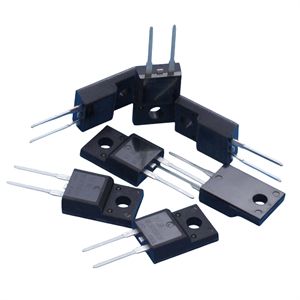Date:2024-09-24 Categories:Product knowledge Hits:457 From: Guangdong Youfeng Microelectronics Co., Ltd(YFW)
What is the principle of pressure drop testing? What is the difference between Schottky diode voltage drop and common misconceptions?
Common testing methods for voltage drop of Schottky diodes
Test with constant current and regulated DC current: First, apply a small voltage so that current can pass through the Schottky diode, then slowly increase the current to reach the rated current of the tested Schottky diode. Wait for the voltage value to stabilize before reading. The stable reading is the voltage drop of the rated current.
Why is the stable voltage reading the correct voltage drop reading: The impedance of Schottky diodes is not fixed, but decreases with increasing temperature (non-linear relationship).
When a current passes through a Schottky diode, the die generates heat, which is then dissipated through the body. When thermal equilibrium is reached (the heat generated by the die can be dissipated in a timely manner), the impedance is relatively stable, which is the law of conservation of energy (P=I2R, P is converted into heat). If tested directly with rated current, the initial reading is relatively high because the core is at room temperature and has the highest impedance. The reading will gradually decrease over time because the impedance decreases with increasing temperature.
Common misconceptions in testing the voltage drop of Schottky diodes
Some users, due to limitations in the testing equipment, directly use a multimeter for testing. Although the multimeter has a diode testing section, its output current is only one or two milliamps. The reading it tests is not the "internal resistance", but the voltage drop when the current is in the milliampere level. Moreover, when using this method to test the voltage drop of each batch of Schottky diodes, the displayed reading may deviate greatly. Schottky diodes usually operate at ampere level currents, with a difference of thousands of times between the two.

Previous: Classification, Structure, and Principle of MOSFET
Next: Do you know the characteristics and applications of Schottky diodes?